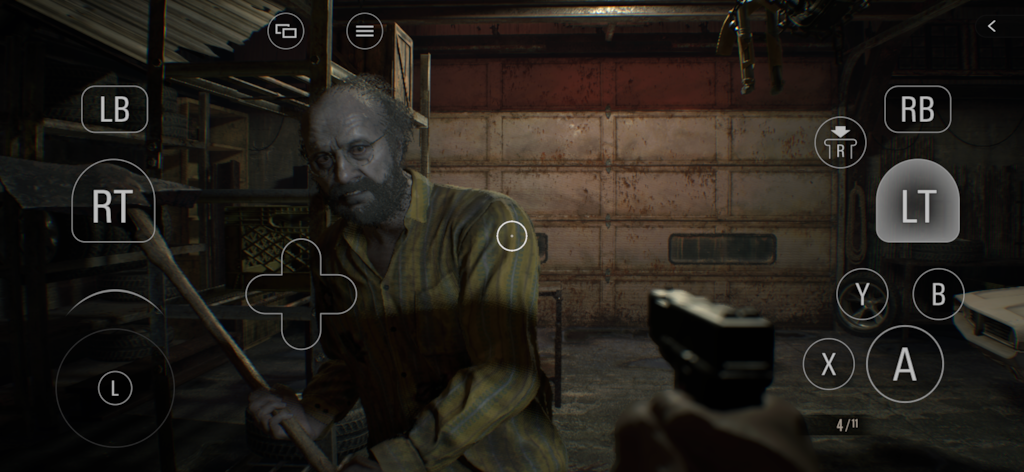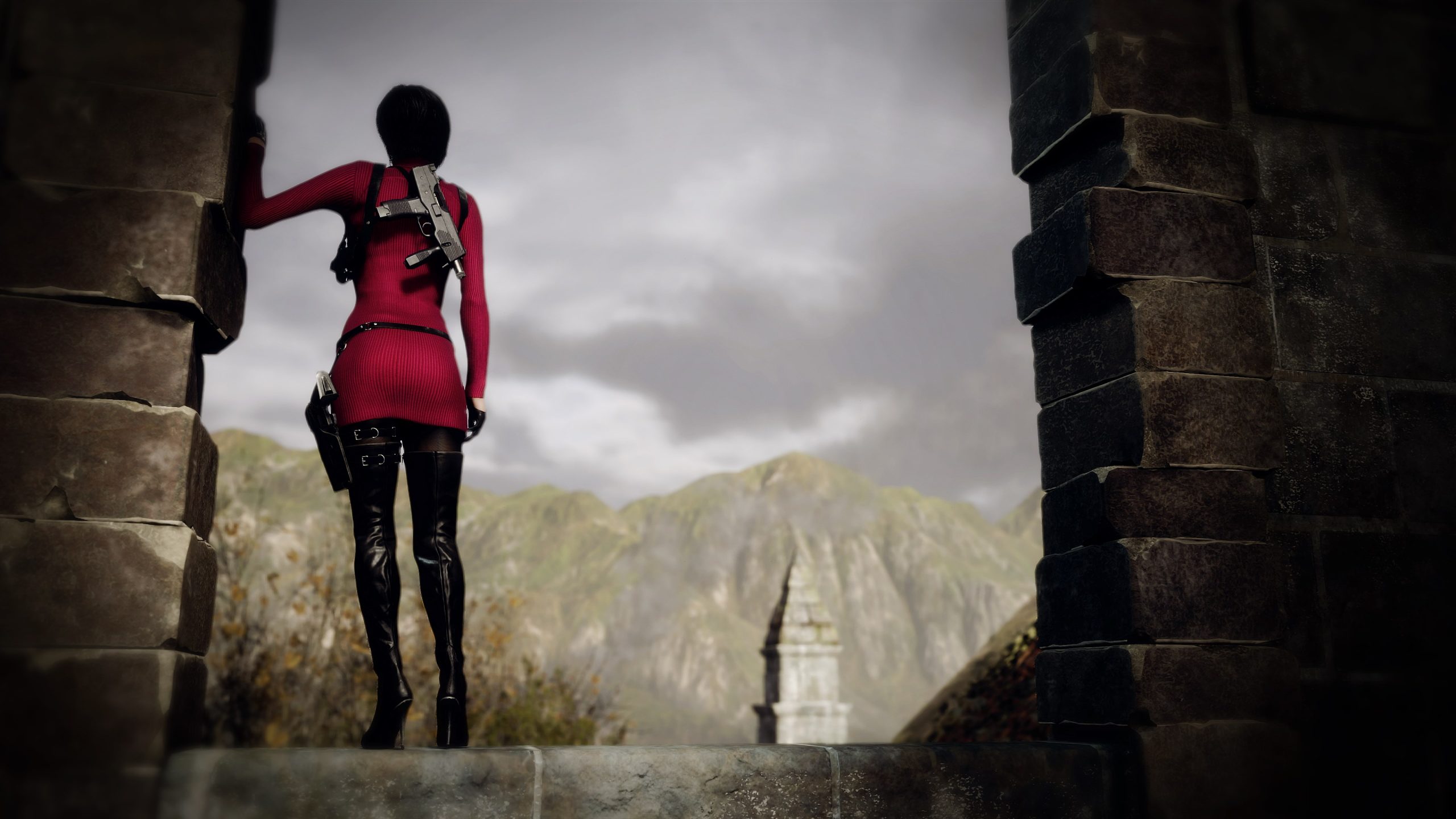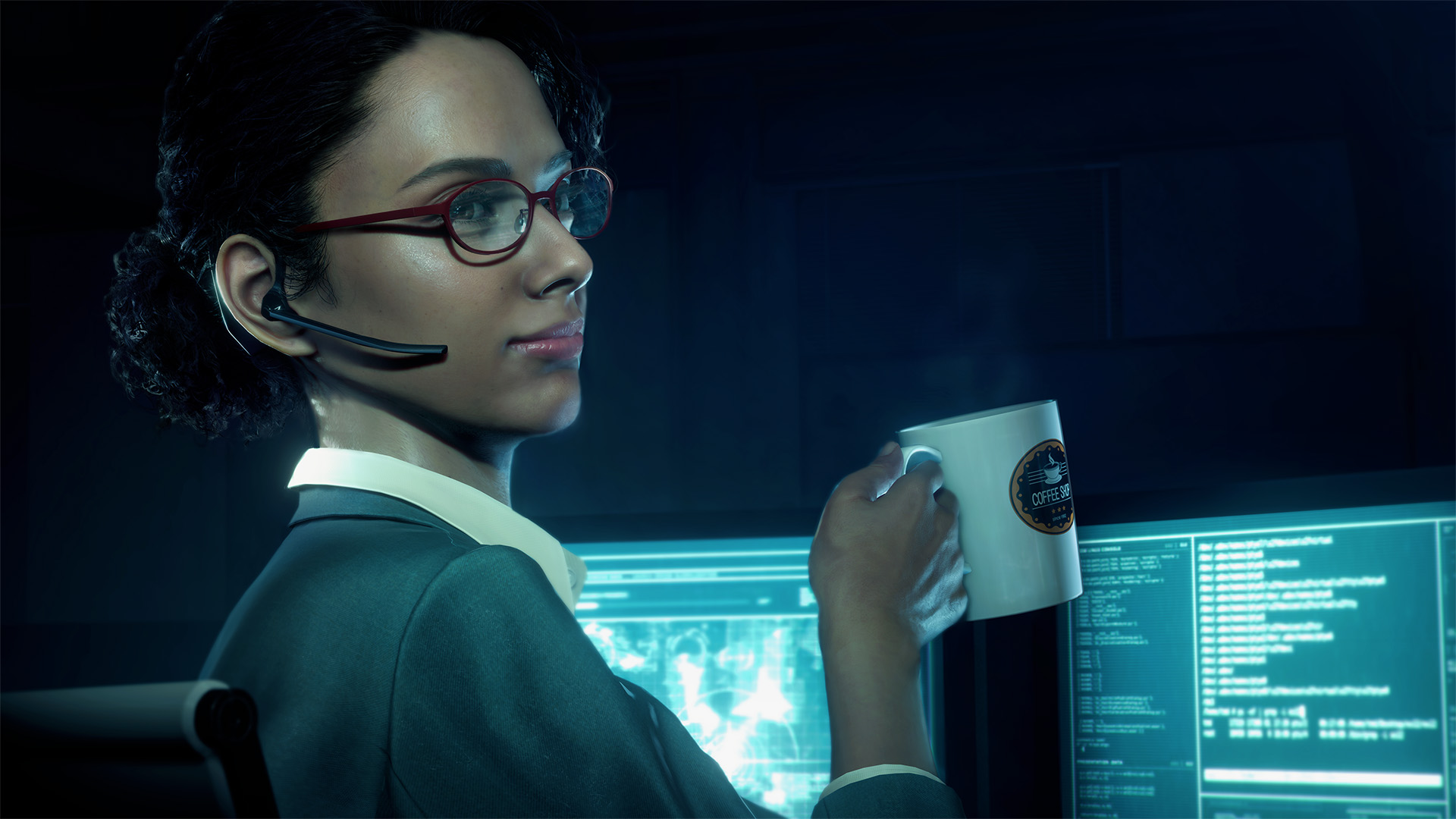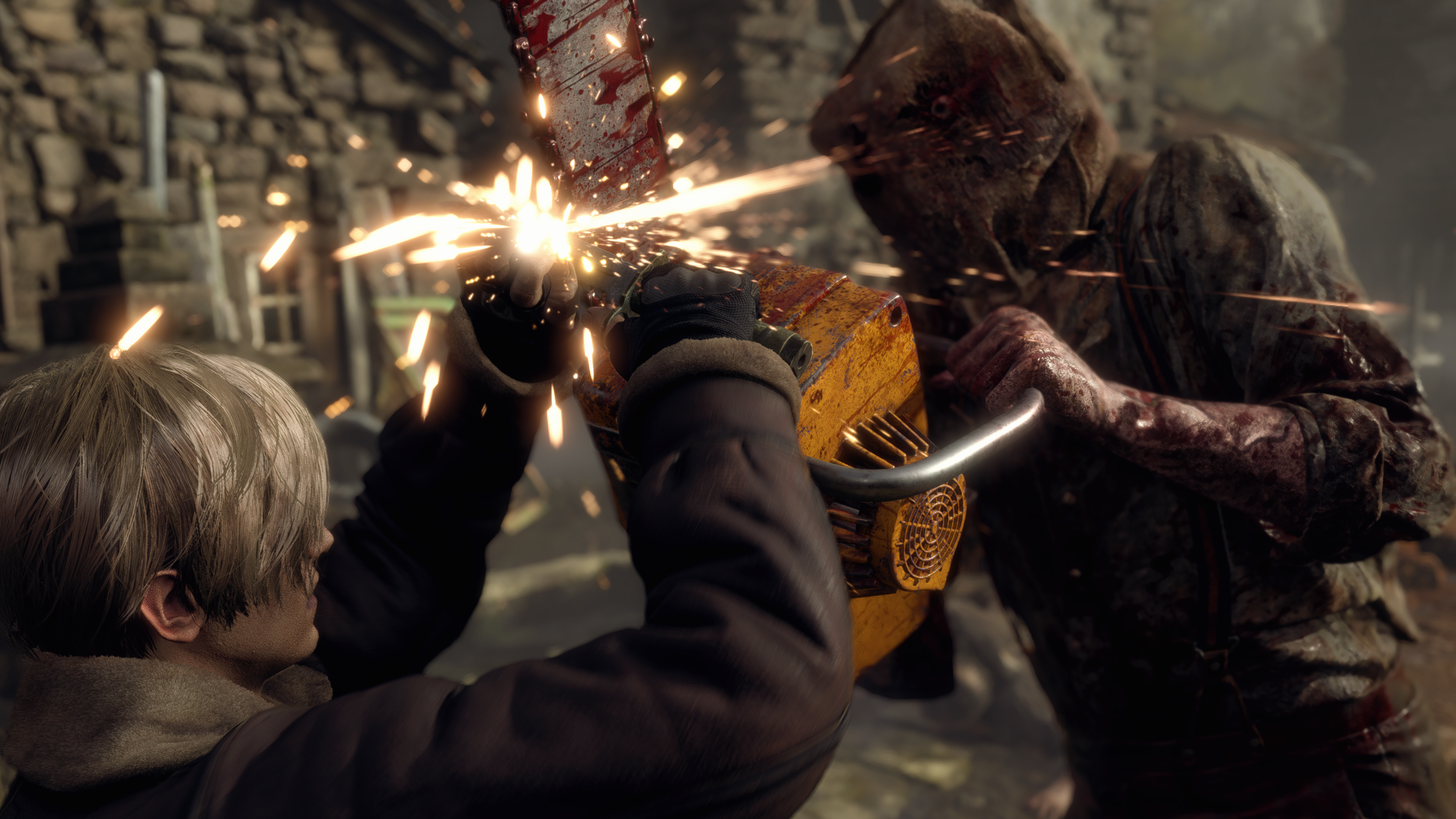To commemorate the release of the PlayStation Classic, PS.Blog Staff conducted an interview with various game creators for titles included in the PlayStation Classic. Among those games is Resident Evil: Director’s Cut. PS.Blog conducted an interview with original staff member Kazunori Kadoi.
The contents of the Japanese interview are translated into English below. The English translation has been written by Alex Aniel. Please note that this interview is not authorized by either PlayStation or Capcom, and should be used for reference purposes only. The original Japanese webpage can be found here. All images in this translation have been taken from the original PS.Blog.
“Resident Evil: Director’s Cut,” included in the “PlayStation Classic” launching on Dec. 3 (Mon.), is an enhanced version of Resident Evil, the game that brought new life to horror games and shocked the world.
“Resident Evil,” the Survival Horror game in which one must escape from an isolated mansion while battling against creatures that draw closer and closer. The game, released in 1996, initiated the horror game boom, paving its way to becoming a global hit series. An enduring masterpiece, the game received additional content and new scenes in the form of this “Director’s Cut.” In this game, the origin of the series, one can enjoy a fear that arouses the human instinct.
We spoke with Kazunori Kadoi, who worked on “Resident Evil” as a Planner and is now serving as the director for “Resident Evil 2.” which launches for PlayStation 4 on January 25, 2019.

Capcom Co., Ltd.
Consumer Games R&D Division 1
Director
Kazunori Kadoi
The basic concept was to “somehow create something scary”
Kadoi-san, please tell us about your involvement with the development of Resident Evil: Director’s Cut (“REDC”).
They call us “Planning Men” at Capcom, but I joined the “Resident Evil” team as a Planner right when development began in earnest. My original responsibilities were to come up with ideas for enemies and stages, but back then, who was responsible for what task was ambiguous. I ended up handling the stage’s camera placements, enemy motion and other tasks, and I was in charge of the Yawn and Chimera’s movements. However, among the Planning Men, I was the only one who ended up going all the way to handling motion, which was quite peculiar at the time. *laughs*
What what the development team environment like at the time?
The “Resident Evil” series is a big name today, but at the beginning, the project was a small-scale effort taking place in some obscure corner in the company, where a group of relatively new employees were gathered together to do whatever they wanted. The team didn’t even have a name. The team began with just 5 or 10 people, and eventually ended up at about 40 to 50. The leader of the team, Shinji Mikami (currently the head of Tango Gameworks), was also still young at this time, with the group comprised of those in their 20s. It was a lively atmosphere full of people willing to take on challenges.
What was the concept behind the game’s development?
The first goal for the game was to “somehow create something scary.” Therefore, everyone would gather around to watch horror movies in order to do research. Among all this, the Planning Men all played through a horror game Capcom released in the past, and decided that it would be a good idea to take its frightening scenes and scariness and reproduce them in a 3D world.
When people think of the “Resident Evil” series, they think of zombies, but what actually led to the inclusion of zombies in the game?
Our first goal was to create a horror game, but beyond that, Mikami-san was a zombie movie enthusiast, which I believe is how the zombies ended up in the game. When I joined the team, they had envision the game having various enemies that would appear in each stage. In the end, the zombies ended up taking center stage.
What were your impressions of PlayStation at the time?
We began development of the game right after the system launched, but the market at the time was still focused primarily on 2D games, and people were wondering how 3D games would turn out. We hadn’t developed much knowledge of 3D games at the time, so development itself often involved a lot of shots in the dark, so to speak.
Also, doesn’t the first PlayStation’s start-up sound have this mysterious, yet ominous kind of feel to it? The sound has left a lasting impression on me personally, and I’ve from many people who very often played through “Resident Evil: Director’s Cut” that the start-up sound effectively became part of the flow of enjoying the game itself.
Were there any difficulties in developing for PlayStation?
Compared to modern consoles, PlayStation had quite a small amount of memory, so there were a number of limitations, such as being unable to couldn’t include a lot of motion or characters on the screen. However, that allowed the Planners to show their hands. They wanted to devise enemy placements in ways that would mask those limitations. The game couldn’t feature a high number of camera angles either, so doing so would exceed the system’s limits, so we made adjustments to show the view from one side. It was interesting to brain storm amidst such limitations.
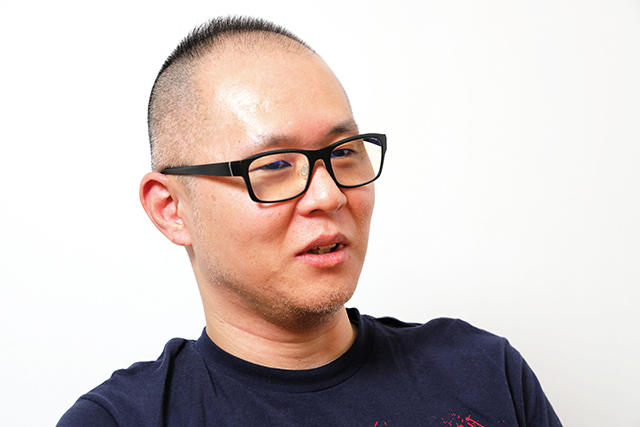
The Cheesy Lines That Have Stuck With Overseas Players
What is your favorite aspect about the game?
It’s been said that Resident Evil is NOT an action game where you just kill enemies; it’s actually an adventure game where you search for things. For those reasons, the action can’t be too convenient for users, which leads to things like one slash with the knife opening up the character to getting bitten once as well. People tend to like that kind of tempo. I didn’t realize that at first; I had actually adjusted the game to allow for players to kill zombies by slashing the knife around, which made people angry. *laughs*
The game became a worldwide hit after launch and remains a big series today. Did you have a feeling this could happen back in the day?
Not at all whatsoever. At that time, there was no such thing as a big hit horror title, and they didn’t have a reputation for selling well, either. *laughs* Even the company itself didn’t have terribly large expectations for the game, so there was a sense of being able to create something we liked as well. We had no expectation that the game would become as widely accepted by people around the world as it ended up being. Perhaps some people saw a chance for success, but for me personally, I didn’t think it would. *laughs*
Nowadays, we can use the internet to find out what users are saying about a game, but back in the day, you’d maybe get feedback about whether a game was good or not after releasing a demo and using a computer to access that sort of information (translator’s note: Kadoi is referring to computer communications in the pre-internet age). Otherwise, we had no idea how a game would be received until it actually came out. When the game finally hit, it’s not like it knocked it out of the ballpark; it steadily became the talk of the town and before we knew it, it made it to 1 million copies. That was the kind of feeling we had.
How do you feel about its success overseas?
We didn’t get real time updates on the game’s sales overseas. There was a feeling within the company that the game was doing well overseas, but it’s not something we could perceive ourselves. Actually, I only began putting more consideration into the overseas market when I became involved with the development of “Resident Evil 5.” Or perhaps after the release of “Resident Evil 4.”
With “Resident Evil 2” (remake), the scale of development has become considerably larger, and foreign staff are a regular presence on the development team. We ask them how they felt about the series back in the day, allowing us to understand their viewpoints to a certain extent. They’ve also praised the enemy designs as being cool. For “Resident Evil: Director’s Cut,” that would be the Hunter, and for the original “Resident Evil 2,” that would be the G-Type, Licker and others. They praised them for being quite innovative back in the day. By the way, I was the one who came up with the idea of the Hunters aiming for the neck. *laughs*
Do you pay attention to the differences between Japanese fans and overseas fans?
The other day, I went to Germany to promote “Resident Evil 2” (remake) at Gamescom. I had an interview with someone, who told me, “How have the cheesy lines and scenes changed?” My understanding is that “cheesy” is an English word that refers to something as being dumb or exaggerated.
We recorded all the lines in “Resident Evil: Director’s Cut” and the original “Resident Evil 2” in English, but in those cases, the Japanese dialogue was written first before being translated into English by a Japanese person. The lines can sound quite strange to a native English speaker. The voice actors were asked to sound out the lines in a manner that Japanese people could easily understand, so that seems to be why the lines sound a bit exaggerated, as well.
Overseas users will say, “I get what’s being said, but it’s pretty strange.” I’ve heard that such strange English can only be made outside of English speaking places, but that it was one specific element of the game people could enjoy. For the remake of “Resident Evil 2,” we’re making the dialogue so that it sounds natural to native speakers. When I heard that there are people who like and are excited for the new voiceovers, it made me realize once again that Resident Evil is a property that sells all around the world.

I want you to experience the origins of Resident Evil through PlayStation Classic
Have you gone back to “Resident Evil: Director’s Cut” now that it’s been included in PlayStation Classic?
Basically, I play through past Resident Evil games on a regular basis. However, because I’ve been playtesting the games since they were developed, the enemy placements are firmly ingrained in my mind, so they’re not scary to me whatsoever. I do forget every now and then, and end up getting my character’s foot bitten and being surprised by that. *laughs*
Did you have others playtest the game as well?
We’ve had people both inside and outside of Capcom playtest the game. We even had people in the business or administration departments, who don’t actually play games, try it out. From our point of view, it was fun watching them play. *laughs* It won’t surprise the developers to see the zombie dogs pop in through the window, but it’ll be shocking for first timers. The game has a lot of moments that leave a lasting impression.
People were shocked, just as we hoped. I’d see their reactions and laugh to myself while saying, “good, good.” *laughs* From “Resident Evil: Director’s Cut” all the way to the present, the fun in seeing this hasn’t changed much. Of course, I’m very happy when I see people who enjoy the games on social media talking excitedly about the Resident Evil series.
What do you personally believe makes the Resident Evil series such a big hit?
I think it’s because there hadn’t been a game that really took the horror aspect seriously prior to Resident Evil, and also because of the graphics. For “Resident Evil: Director’s Cut,” it was realistic to be able to control 3D characters in a variety of camera angles, which was rare for games back in the day. I think it’s important for horror to contain elements of realism, which the series has expressed properly.
Please tell us what you want people to particularly have fun with when playing “Resident Evil: Director’s Cut” on PlayStation Classic.
If you play the game now, you might get a sense that the graphics are a product of 20 years ago, and the controls might seem highly restrictive. However, players should be able to get used to it right away, allowing them to enjoy the game and the elements in it that you wouldn’t find in a modern game.
Seeing those graphics today, they will look very rough, but that should lend to its creepy factor. I want players who are trying it for the first time to understand that this is the origin of Resident Evil. I think people who are even just a little bit familiar with English will find the lines and voice acting I talked about earlier to be strange, but one of the fun points of the game.

Resident Evil 2, the famous game reborn using modern technology
The latest in the series, “Resident Evil 2,” will be released in January next year. Kadoi-san, you’re the one directing the game.
I’m looking after almost all content in the game. I think about what should go into the game, give orders related production and decide the direction to go in. I’m essentially doing what Mikami-san did when I was new to the company. Mikami-san used to vehemently tell all the staff members back in the day, “It’s all because this is an adventure game.” I find myself telling today’s staff members the same thing. *laughs*
“Resident Evil 2” (remake) has largely the same story, but aside from that, the visuals, content and core base are different from the original. However, we want players to enjoy the remake with the same feelings they had when enjoying the original “Resident Evil 2.” Therefore, the remake must be an adventure game like the original “Resident Evil 2.” When I was a new employee, there were a lot of things I didn’t understand, but now that I’m in the Director’s seat, I find myself realizing and saying to myself, “I see, so this is what goes through a Director’s mind.”
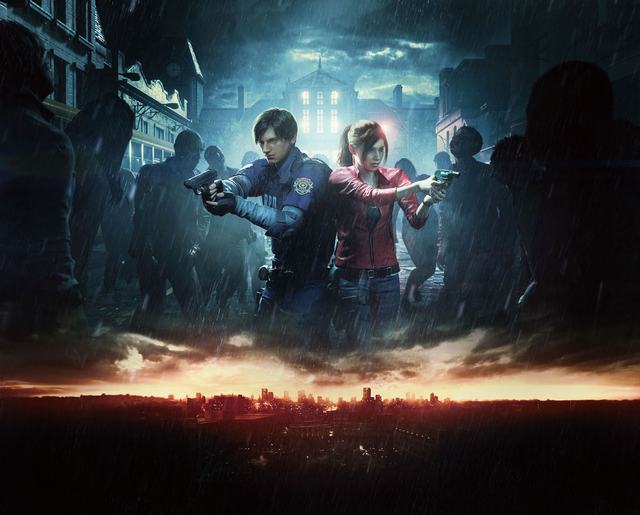
Aside from developing an adventure game, what other points are you focusing on?
There are the item slot limitations, the need to manage resources like bullets and knives in order to be able to fight enemies and other important things like that. The games in the series from “Resident Evil 4” onward allowed for melee attacks, while enemies dropped bullets when you killed them; there were strong action elements in those titles compared to the ones that came before. However, I wanted to create something that focuses on resource management, going back to the adventure game where you are compelled to run away from danger and you experience the fear of being unable to use melee attacks.
Bullets are like MP in an RPG game, so they’re strong, but once you run out, you’re kind of screwed. I hope players are able to enjoy constantly thinking about whether using these important combat resources makes sense, and conducting their frantic Resident Evil search while running away from enemies.
Beyond that, the game offers free aiming absent in the original game, as well as enemies reacting different depending on where they are shot. I want to make feel as if the player were actually confronting the enemy.
The game’s slogan is, “Everything recreated.”
The remake of “Resident Evil” that we released in the past featured drastically improved graphics, but the game’s flow and controls weren’t that different from the original. For this game, we wanted to maintain the feel of the original “Resident Evil 2,” but redo the map, story developments and other elements from scratch. If one plays the “Resident Evil 2” remake based off his/her knowledge of the original “Resident Evil 2,” the player will find him/herself uttering, “That game has changed THIS much!”
For example, if the game was supposed to take place in a refuge shelter, then we wanted to leave evidence that there were people who sought refuge there. We ended up redoing nitty gritty details like this and putting it in the game. I really hope players think, “I don’t think was in the original game, but now it sure feels like it was.”
It seems like it was tough to decide what to keep and what to change.
The traps in the original “Resident Evil 2,” when viewed from a modern lens, may seem too far removed from reality; if you try to draw the line in terms of realism, then maybe it would be best to take such traps out of the remake. However, these elements are part of the players’ memories, so we had to think carefully about how to change things around. The result was to include elements that maintain the feel of the original, rather than thinking about what was too outrageous about the puzzles in the original police station and then getting rid of them. We redid everything in a way in which players may think, “Well, I guess this would be possible.” I hope they enjoy the things we rearranged in the remake.
The fear one feels toward the zombies is another big point in this game.
I have a particular fondness for how terrifying zombies can be. I focused on the zombies motions as they go after the player, how they are damaged and how they react depending on where they’re shot. And for the players, I focused on having bite marks remain if they’ve been bitten. I wanted the game to have realistic elements like that.
In recent times, it isn’t unusual to see zombies that can run. I personally like it better when zombies are slow. For the “Resident Evil” series in particular, I think those moments when zombies gradually come toward the player and make him/her wonder, “What should I do?!” are more important to the game’s tempo than zombies merely appearing in front of you out of nowhere. “Resident Evil 2” (remake) places importance on the fear one experiences as the zombies keep coming for them no matter how many times they shoot them.
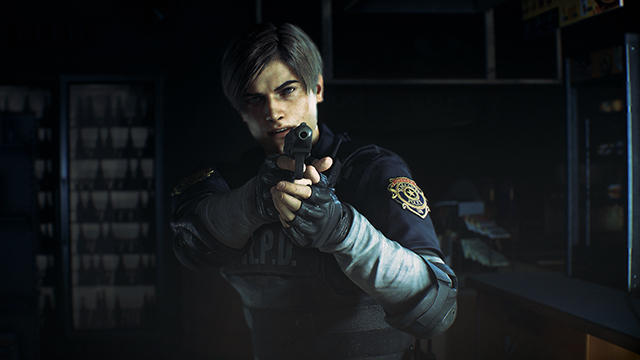
In order to portray true fear, you do everything that you can
I asked about this a bit earlier, but you said that foreign people are now an indispensable part of the team. Have their opinions been implemented into the game as well?
For example, from the perspective of a Japanese person, there’s somehow this tendency to make character motions and costumes more anime-like. For this project, we’re really focusing on the idea of realism. An anime-like approach may not seem particularly out of the ordinary for our Japanese staff, but out foreign staff would often say, “That doesn’t look realistic.”
Even for things like clothing, if the colors seem too anime-like, then people overseas may find it unrealistic. We recently announced that the original outfits would be brought back in the remake as classic costumes, but there were also people among our foreign staff who felt they didn’t look real. That said, if a game looks too realistic, then that can be boring as well, so we’ve decided to pursue a balance.
As someone who has been involved with many games in the series, what do you think makes Resident Evil the game it is?
The assumption is that once you begin playing, you will experience true fear. If you don’t try your absolute best to create a scary experience, then you can’t really experience a sense of true fear. You don’t just stop at “This is probably fine,” you decide to go further and decide to make something even scarier. If you don’t constantly follow that MO, then your game will turn out to be very pedestrian.
Also, Resident Evil is about releasing something magical, as well as not veering off of the game’s universe. Not making characters too powerful. All of these are traits shared throughout many entries in the series. Things like hacking and slashing zombies to death with a sword and killing them with one hit are decidedly things that do not belong in the series.
However, without the different directions Resident Evil has gone down, then there could be no series. Resident Evil today isn’t something just one person decides and creates; it’s the product of staff members at Capcom sharing their opinions as they all create the game. I think Capcom’s direction and atmosphere as a company is what makes Resident Evil the game it is.
Finally, do you have anything to say to those looking forward to the remake of “Resident Evil 2”?
The “Resident Evil 2” remake is indeed based off of the original, but we’ve put forward the highest level of effort to ensure the content is distinct yet befitting of a latest entry in the series. I think the timing of “Resident Evil: Director’s Cut” on PlayStation Classic lines up with the release date of “Resident Evil 2” perfectly, so I hope people are able to enjoy those Resident Evil elements that make both games so fun and interesting.

Within its more than 20 years of history, the “Resident Evil” series has always pursued new forms of horror. The origins of that horror can be enjoyed in “Resident Evil: Director’s Cut,” while “Resident Evil 2” (remake) is a recreation of the original using modern technology. I want people to play these two games, which are the embodiment of horror both new and old, and appreciate what makes them so charming.





